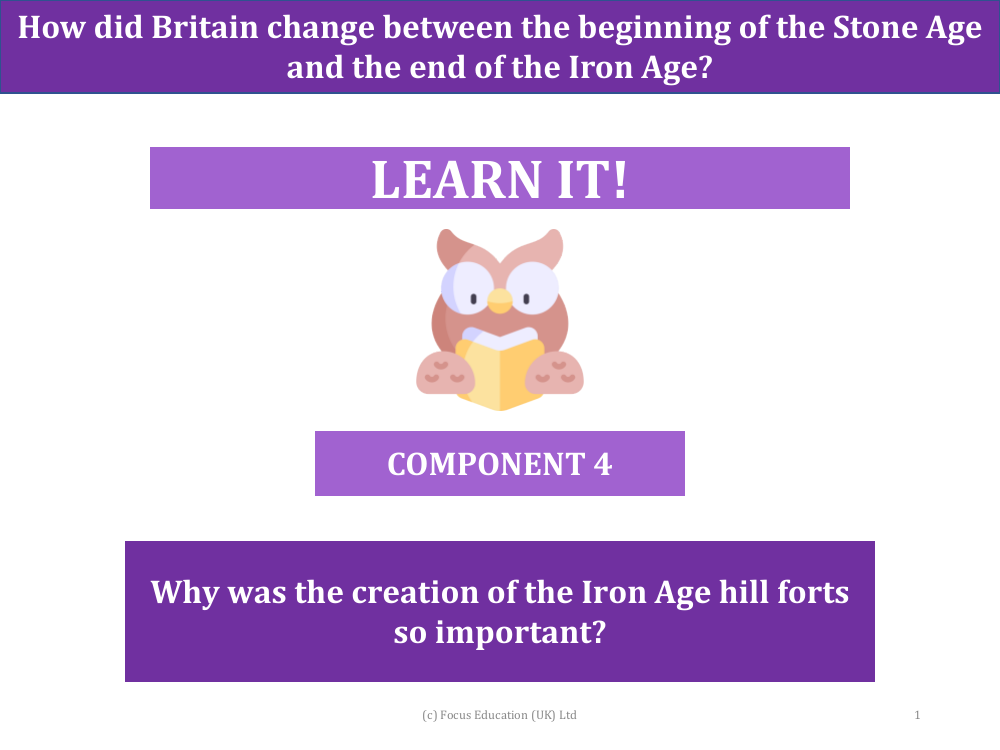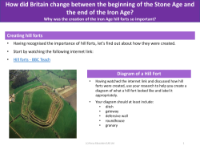Why was the creation of the Iron Age hill forts so important? - Presentation

History Resource Description
The creation of Iron Age hill forts represented a significant development in Britain's prehistoric period. These structures were crucial for the security and organisation of Iron Age communities. The hill forts served as fortified settlements, strategically located to provide a vantage point against potential invaders. They were necessary due to the increasing need for defence and the rise of territorial disputes during the Iron Age. Life within these hill forts was communal and structured, with families living in roundhouses made from wattle and daub. These homes centred around a fire pit for cooking and were furnished with simple items like food storage jars and straw beds. Apart from daily domestic life, the community engaged in farming, raising animals such as cows, sheep, and pigs, and practised trades like pottery, carpentry, and metalworking.
In exploring how these hill forts were constructed, students are encouraged to research and create detailed diagrams to visualise their complex layouts. Essential components of a typical hill fort included defensive ditches, gateways for controlled access, solid walls for protection, and internal structures like roundhouses for dwelling and granaries for storing harvests. These features illustrate the sophistication of Iron Age engineering and the importance of these forts in sustaining large communities. The study of hill forts offers valuable insights into the social and military advancements that occurred from the beginning of the Stone Age to the end of the Iron Age, marking a period of significant transformation in Britain's ancient history.





